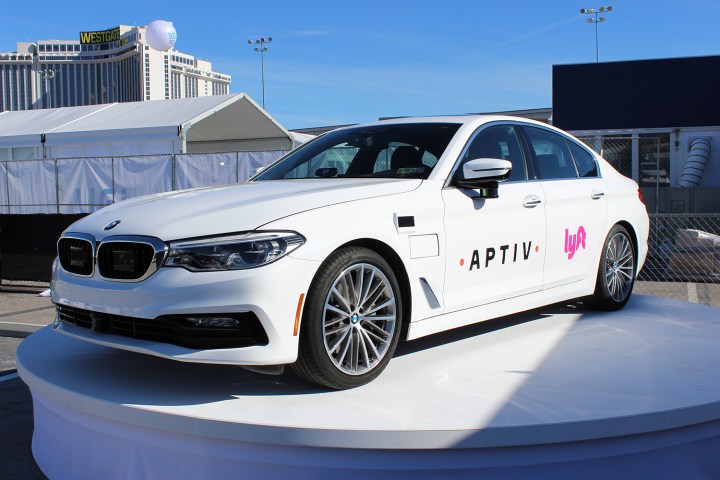
Here are a few concepts, reveals, and demos that we thought truly stood out. Some may be more far-fetched than others, but they all illustrate our potential automotive future.
Toyota E-palette
If we showed you an empty box and touted it as not empty but full of potential, you’d be right to slam the metaphorical door in our faces. This is what Toyota did with its reveal of the e-Palette concept, but its magic worked: we saw the potential.
The concept is basically a modular autonomous platform (read: a box on wheels) that can be configured for whatever job you can imagine for it — ridesharing, deliveries, or even mobile retail centers. Amazon, Uber, and even Pizza Hut are already on board with the idea so, sooner or later, tipping the delivery guy might be a thing of the past. We like it because it takes the level of an autonomous vehicle far enough away from what we know as a traditional car. That big a leap out of the familiar might be what it takes to break some of our apprehension about the autonomous vehicle concept.
Aptiv/ Lyft
Demonstrations of most of the autonomous vehicles that come to CES are usually reserved for a few media attendees. And they are often conducted on a makeshift parking lot course. This year, Aptiv partnered with Lyft to not only open demonstrations to anyone in the show’s attendance, but they also made them useful. Using a small fleet of BMW 5 series sedans equipped with Aptiv’s self-driving tech, riders could take to public roads and have the car shuttle them to more than 20 points across Las Vegas.
We took a ride and it was as boring as it should’ve been. No drama, not even amazement, just a normal ride, and we liked that. It was also great to see a specific practical application of autonomous tech and not just a “wouldn’t it be nice” pseudo-demonstration. It was also a good touch to open up the rides to anyone who visited the parking lot staging area, which allowed regular CES attendees a to take a ride to show them how normal this could be.
Nvidia Drive Xavier

Seeing autonomous driving tech at CES is a given. Tech companies are coming out of the woodwork to develop a system that drives a car for you. Nvidia came to this year’s CES and dropped the Nvidia Drive Xavier, the processor that’s going to make it happen. There’s a lot of technical details to back that up, but it’s essentially a powerful chip designed specifically to handle the demands of self-driving cars.
Beyond facilitating autonomy, Nvidia will also be a big part in bringing augmented reality (AR) into cars. Using the same functionality that allows an autonomous system to recognize the world around it, Nvidia’s AR can overlay what we see with the same data. So, imagine a digital display (or maybe a windshield) displaying real-time directions, points of interest, and alerting you of dangers around the vehicle.
BYTON
The reveal of Byton’s all-electric concept is something that’s become a mainstay here at CES: A heretofore unknown startup who will “change what it means to drive.” Here’s the thing, if Byton is actually successful, we’re all for it! We just don’t have our hopes up. Billed more as a mobile device, Byton says its production car will have level 3 and 4 autonomous capabilities, use facial recognition instead of keys, and will be operated by hand gestures as well as Amazon Alexa-powered voice commands.
Car-wise, the Byton will have between 248-328 miles of all-electric range and lay down up to 523 pound-feet of torque. It’s another endeavor to make the automobile as appealing and easy to use as a smartphone. Its goal of having a $45,000 production model available in the next couple of years has all sorts of sirens going off in our heads, but we’ll be happy to be proven wrong. Let’s see if they can succeed where Faraday Future could not.
Editors' Recommendations
- Digital Trends’ Top Tech of CES 2024 Awards
- At CES 2020, BMW will make sleeping in a city car sound attractive






